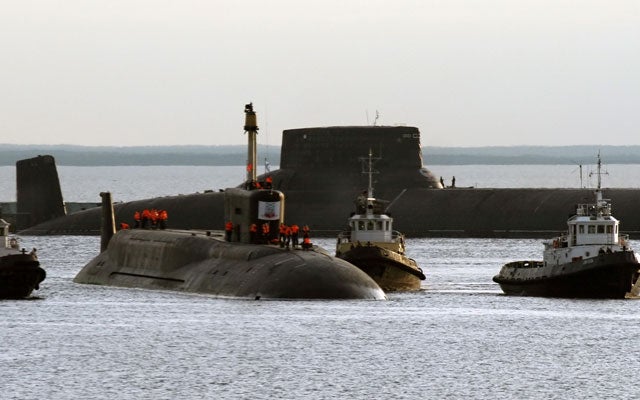Tomorrow, the House Armed Services Seapower and Projection Forces Subcommittee will hold a hearing titled “Undersea Warfare Capabilities and Challenges.” As the Navy and Congress work to preserve the fleet amidst budget cuts and submarine buildups in China and Russia, here are some issues to consider.
Ohio-Class Replacement
The Ohio-class ballistic missile submarine (SSBN) fleet has served as America’s most survivable leg of the nuclear triad for three decades. These stealth submarines can remain at sea nearly constantly, providing critical deterrence to potential adversaries.
However, the SSBNs are nearing the end of their service lives, which has already been extended once. The Navy has considered replacements, but cost estimates and budget pressure have called into question the ability to maintain this capability. Even before sequestration was a factor, President Obama had requested to delay development of an Ohio-class replacement, which would cause the fleet to fall below its legally mandated 12-ship minimum.
If this capability is still a critical component of U.S. national security strategy, then Congress needs to strive to maintain it. One option is extending the Virginia-class attack submarine design to accommodate additional torpedo space. This and other options should be more urgently vetted as shipbuilding resources grow increasingly scarce.
Cruise Missile “SSGN” Submarines
In the 1990s, four of the SSBN Ohio-class submarines were converted into cruise missile “SSGN” submarines, which no longer have nuclear deterrent capabilities. However, they now serve as platforms for various critical missions, including deploying Navy SEALs, cruise missile strikes, and intelligence gathering.
As the SSBNs near the end of their service lives, Congress and the Navy need to assess how to continue performing operations that this platform provided in a stealthy, survivable capacity. As with the SSBNs, decision makers should analyze the Virginia-class platform to see if it can assume any of the SSGN’s unique responsibilities. If not, the Navy needs to assure that it can fulfill these capabilities on other platforms.
Furthermore, Congress needs to examine whether enough are in the fleet to assume the responsibilities that they shared with the SSGNs. Congress and the Navy may also want to look at diesel-powered submarines if certain capabilities can be achieved on these less expensive platforms.
Virginia-Class Attack Submarine Fleet
The Virginia-class submarine (SSN) has been a leading program for the Navy in terms of responsible procurement and development. The SSNs have been consistently delivered under budget and ahead of schedule. Congress has funded two per year to help achieve these cost savings. The Navy should make sure that lessons learned from the Virginia class continue to be applied both for this program and anywhere else applicable.
Finally, the budgetary success of the SSN fleet should not be undermined by blind cuts. Chief of Naval Operations Admiral Jonathan Greenert has admitted that sequestration would possibly reduce Virginia-class procurement to one per year. This could cause efficiencies to be lost, ultimately costing the Navy more in the long run while also slowing the fleet’s delivery.
Broader Fleet Concerns
U.S. submarines provide critical capabilities ranging from nuclear deterrence to low-intensity conflict deployments. Yet the significance of these boats should not overshadow the other concerns of the Navy’s fleet. With sequestration overhanging every decision Congress makes, lawmakers should find ways to fund the entire Navy fleet. It is their constitutional responsibility to “provide and maintain a Navy.” U.S. security depends upon this responsibility.
